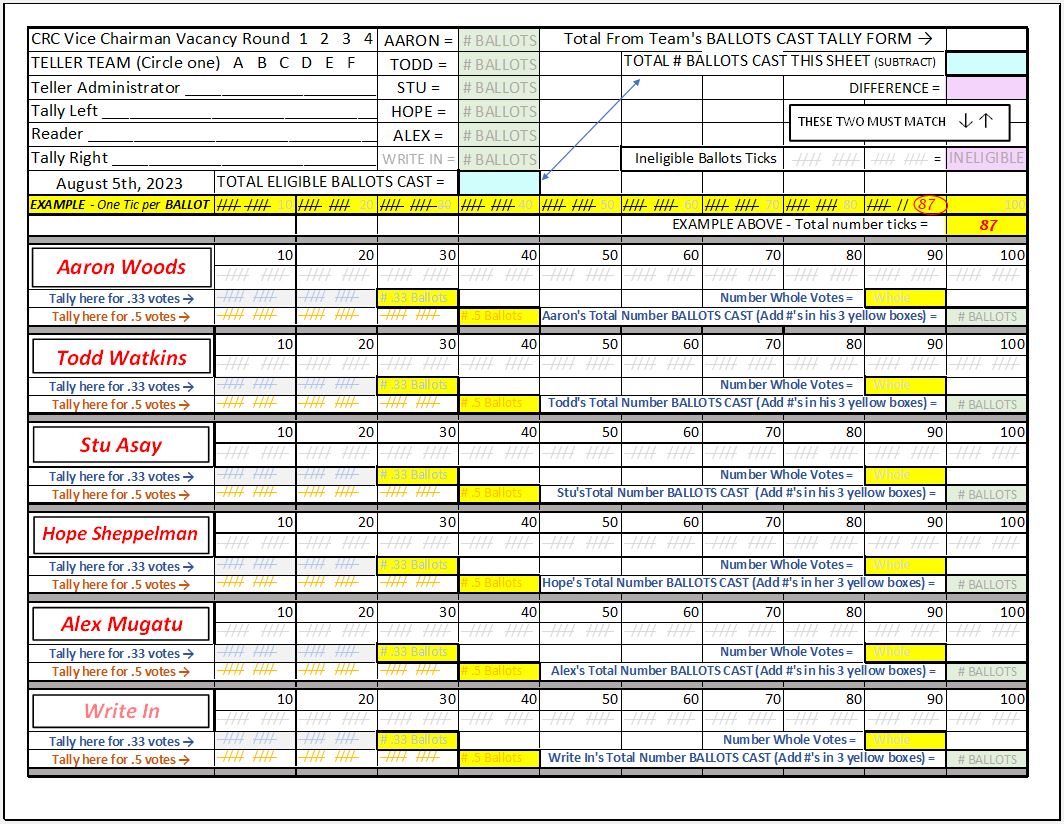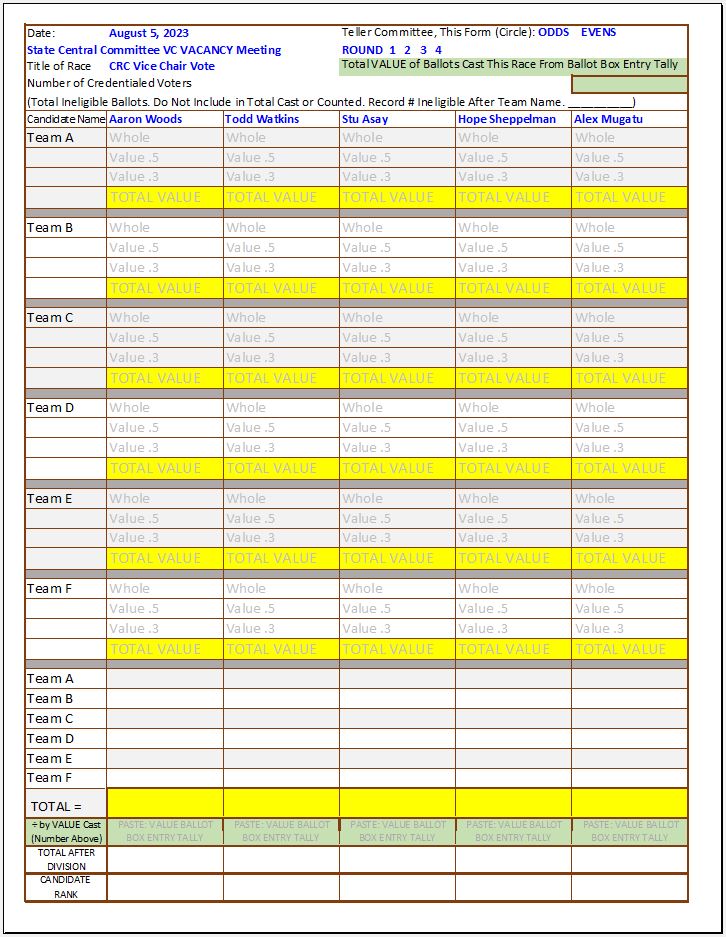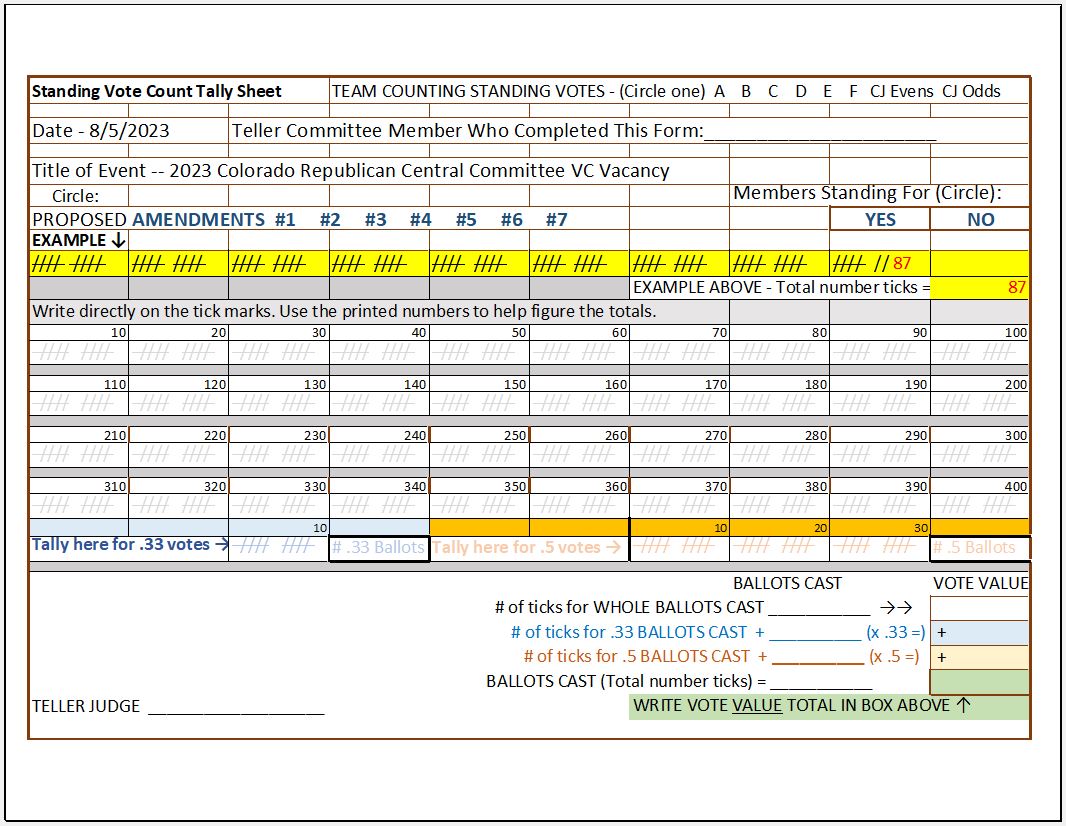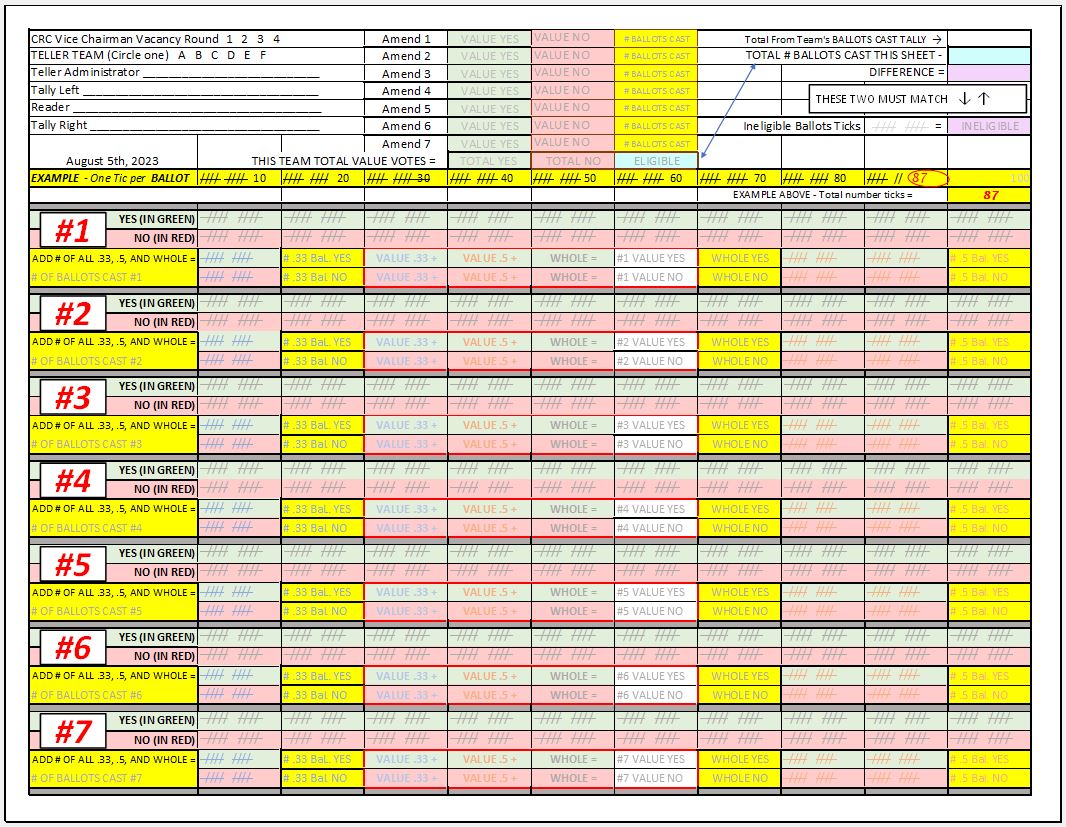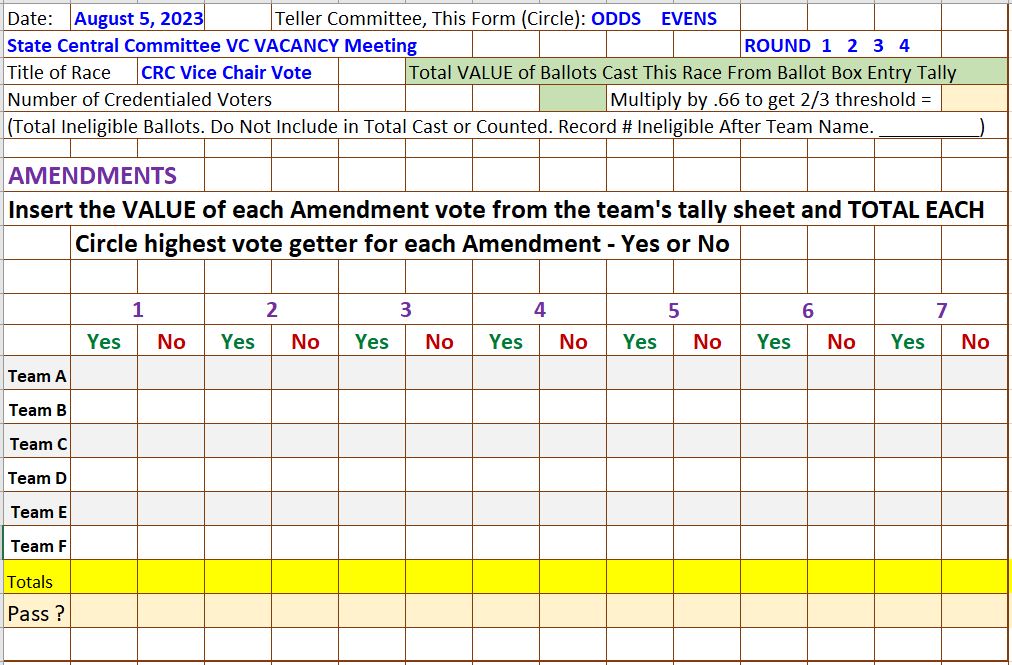The 2023 Vacancy Committee meeting to elect a new Vice Chairman for the Colorado Republican Committee served as a testimony to the importance of a well-run, transparent, paper ballot elections. The first round of voting for the Vice Chairman did not produce a majority winner, but it did prove that the electronic credentialing process had failed to count as present at least a dozen members.
Improvements will be made to the credentialing process for the September 30th Opt-Out meeting, and all processes will be tightened up. The August 5th meeting was a good chance for the new Chairman, Dave Williams, to get his teams ready for the Opt-Out meeting.
Below are the forms used for the Teller Committee, and some that were not used but were on hand if needed.
This is the Ballots Cast at Box Count Sheet. One of the three members of each of the six Tally Teams made a mark, (directly on the pre-printed tick marks), for each of the ballots as they were cast into their clear ballot box. One member held the box and watched as the first member checked the voter’s credentials badge and put a sticker on the voter's badge to show they had cast a ballot.
At the close of balloting, all six teller teams proceeded from the auditorium floor onto the stage and took their seats at the team’s counting table. The ballots were always within sight of the voting members.
Each Tally Team consisted of one “Reader” and two Tally Judges. The Tally Judges were numbered 1 through 12. Only the team’s Reader was authorized to touch the ballots. One at a time, the Reader removed a ballot from their box, read the name on it and showed it to the Tally Judges on either side of him, watching to see that they both recorded the vote in the correct row. Each team had a unique color of pen and marked directly over the pre-printed tick marks.
The following is the tally sheet the Tally Judges used to record the votes as the Reader read them off.
The six Candidate’s Judges were assigned by each candidate and the Teller Chairman. They were non-voting members of the State Central Committee, so they could dedicate their full attention to the process. Each Candidate Judge was assigned two Tally Judges who both had odd or even numbers.
When the Tally Team completed recording the ballots in their box, their Candidate’s Judge counted the number of ticks for each of the whole, half, and third votes. They then recorded the number of ballots counted and compared it to the number recorded on the Ballots Cast at Box Count Sheet. They also calculated the VALUE of each type of ballot and recorded that.
When the numbers on the two forms agreed, the Candidate’s Judges took their Teller Team member’s Tally sheets and gathered at their table. They became two Tally Teams – the evens and the odds. The Reader read off the total numbers of ballots and ballot VALUES for each candidate for each team, which the Tally members then recorded on the Teller Judge Teams Total Sheet, below. The even and odd team’s totals matched.
For the Proposed Bylaws Amendments, Chairman Dave Williams told the Teller Committee to be prepared to count either a Standing Vote or a Paper Ballot Vote.
For the Standing Vote, Teller Teams would have marked the value of the SCC member’s vote on the sheet below as they stood and counted up their votes and their proxy votes. The fractions would have been recorded on the sheet, but not added to the verbal count as each member called off their vote and its value, avoiding having to call out something like “91.83.” The recorded fractional votes would have been added to the whole votes at the end.
If paper ballots would have been used to tally the votes to approve or not the amendments to the bylaws, the Teller Judges would have used the following sheet to record the number and value of the yes and no votes for each amendment.
Just as the Candidate’s Judges confirmed and tallied the number and value of each of the candidate’s votes, they would have used the following sheet for the proposed bylaws amendments.
At the meeting, the results for Amendments one through six were clearly determined by the Chairman without a teller count. A Roll Call vote was called for and held to determine the results for Amendment 7. The duty of conducting a vote of their qualified SCC members fell to each of the County Chairmen, who then reported the results to the SCC Secretary. Tally sheets for each county with the names and value of the votes for each SCC member will be prepared for the September 30th meeting, in the event that another Roll Call vote is required.


